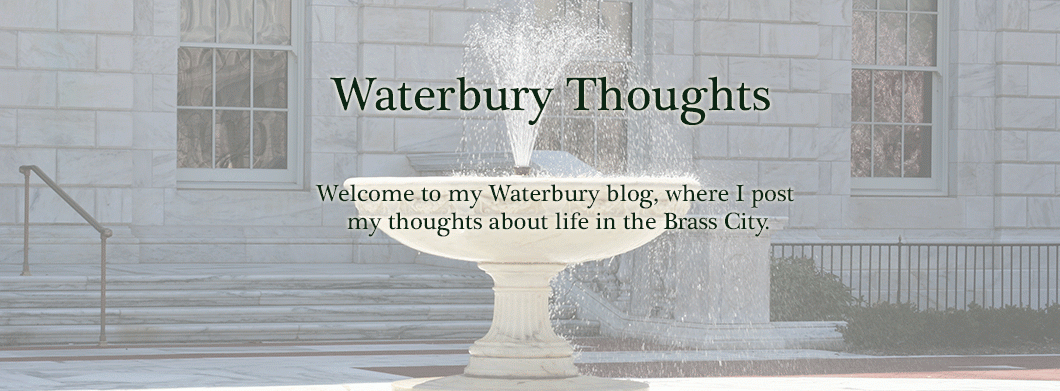Last week, on August 20, the Connecticut Community Foundation (CCF), based in Waterbury, held its first annual Trustee Award Ceremony at South Farms in Morris. They honored two organizations that embodied partnership and collaboration, core values of the Foundation. One of those two organizations was the Almost Home Summer Camp program, started this year in the WOW neighborhood.
Wednesday, August 26, 2015
Sunday, August 16, 2015
Charlton Comics: The Tenuous Waterbury Connection
Most people are aware of Waterbury's claim to fame as home of Eastern Color Printing, the first printing company to make comic books. Lesser known is Waterbury's connection to Charlton Comics, a Derby-based company that helped launch the careers of some of the biggest names in comic books. According to anecdotes, Charlton Comics used a Waterbury printer for their first however many years, and they were co-founded by one of the defendants in Waterbury's Hayes-Leary scandal. I had assumed that Charlton was printing in Waterbury because the company's co-founder was from Waterbury (but you know what they say about assumptions...).
Yesterday, I attended a panel discussion about Charlton Comics at the Connecticut ComiCONN. While I was already aware of much of what is generally known about the company's history, the discussion got me thinking about it in new ways, and inspired me to write what I thought would be a quick blog post highlighting the Waterbury side of the Charlton story. As it turns out, I've stumbled onto a piece of history that hasn't been fully documented and is mostly misunderstood.
In my effort to trace Waterbury's ties to Charlton Comics, I have found more questions than answers. There is a documentary about Charlton currently being made, so perhaps the film makers will uncover some of the answers. Or, perhaps, someone reading this post will share a few clues in the comments section. In the meantime, however, here's what I know.
Yesterday, I attended a panel discussion about Charlton Comics at the Connecticut ComiCONN. While I was already aware of much of what is generally known about the company's history, the discussion got me thinking about it in new ways, and inspired me to write what I thought would be a quick blog post highlighting the Waterbury side of the Charlton story. As it turns out, I've stumbled onto a piece of history that hasn't been fully documented and is mostly misunderstood.
 |
| Charlton Comics panel at CT ComiCONN, 15 Aug 2015 Left to right: Mort Todd, Roy Thomas, Paul Kupperberg, TC Ford |
In my effort to trace Waterbury's ties to Charlton Comics, I have found more questions than answers. There is a documentary about Charlton currently being made, so perhaps the film makers will uncover some of the answers. Or, perhaps, someone reading this post will share a few clues in the comments section. In the meantime, however, here's what I know.
Sunday, August 09, 2015
Dating Your Family Photos
Being able to easily identify the approximate date of an old photograph is a skill I take for granted, since I do it all the time. Yesterday, after a friend posted something on Facebook, I realized that it is not a common skill. I looked for a good guide to identifying photograph dates for my friend, but I couldn't find one I liked. So, with that said, here is a guide to figuring out when a photograph was taken (using all Waterbury and Waterbury-connected photos, of course!).
1. No photographs before the 1840s.
The photographic process was invented in France by Louis Daguerre in 1839. That first type of photograph is called a daguerreotype, after its inventor. Only one image was made, developed directly on a glass plate, which was then placed in a protective case.
Daguerreotypes had a long exposure time, meaning that people had to hold still for several minutes to avoid looking blurry. Daguerreotypes of street scenes don't show any people or animals, unless they happened to be standing still during the exposure time. People walking by were effectively invisible.
Waterbury's Scovill Manufacturing Company was the first in the U.S. to make daguerreotype plates, starting in 1842.
1. No photographs before the 1840s.
The photographic process was invented in France by Louis Daguerre in 1839. That first type of photograph is called a daguerreotype, after its inventor. Only one image was made, developed directly on a glass plate, which was then placed in a protective case.
Daguerreotypes had a long exposure time, meaning that people had to hold still for several minutes to avoid looking blurry. Daguerreotypes of street scenes don't show any people or animals, unless they happened to be standing still during the exposure time. People walking by were effectively invisible.
Waterbury's Scovill Manufacturing Company was the first in the U.S. to make daguerreotype plates, starting in 1842.
 |
| Daguerreotype of St. John's Church on the Green, Waterbury, circa 1847 (Collection of Mattatuck Museum) |
Subscribe to:
Posts (Atom)


